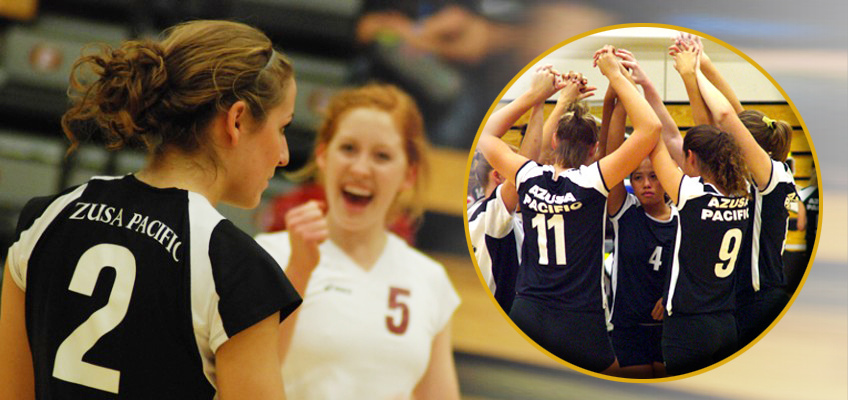
Members of the women's volleyball team at Azusa Pacific University shouted and flashed plenty of the usual signals during a close game in the fall of 2007, but a peculiar one proved to be their secret weapon that day.
"Link up, link up!" the players on the sideline yelled to their teammates out on the court. Everybody on the team knew the meaning of this verbal admonition: Time for a Quick Coherence®.
"They were interlocking their arms all in row," researcher Cynthia Tanis, who watched from the stands that day, recently told HeartMath. "They were yelling, 'Link up, link up,' and they ended up winning the game."
The bench players, of course, were calling for their teammates to do HeartMath's Quick Coherence Technique, which they'd all practiced for weeks as participants in an independent study Tanis was conducting on heart-rhythm biofeedback training using HeartMath methods and the emWave® Pro and emWave2®.
"I know it (Quick Coherence) was one of the contributors to the success of that game," Tanis said. "You could actually feel it. The players on the court actually relaxed… They won the match."
Among the various HeartMath techniques practiced during the study, she said, "They used Quick Coherence primarily: heart focus, heart breathing and positive emotion. It was that component of positive emotion that was important to them."
Players in every sport, including volleyball, routinely flash a bevy of hand signals during games, but when the Azusa Pacific players hit the courts, they added the QC to their contingent and used it in the thick of competition. What they would do, Tanis explained, was make a circle with the thumb and index finger on each hand and then interlock the circles whenever someone felt the need for a Quick Coherence.
"Anyone could flash the signal at any time," she said, recalling the telling words of one participant during the evaluation of the HeartMath training. "When we link up we so surpass anything we ever think we could do."
The study, The Effects of Heart Rhythm Variability Biofeedback with Emotional Regulation on the Athletic Performance of Women Collegiate Volleyball Players, was conducted for seven weeks beginning the first week in October. Player performance was measured during nine games in the middle of the season.
"The four key areas evaluated were serving, hitting/spiking, passing and digging," Tanis said. "Every time they contacted the ball they were evaluated. It really gave a picture of the entire performance of the athlete."
Although Tanis found there was a ceiling to how much the performance of these 13 participants — already nationally ranked, high-caliber collegiate players — could improve, she also wanted to know if the women could learn to self-regulate their emotions after going through the training.
All of them did, she said, adding that she invited a 14th participant unable to attend all of the sessions to at least go through the biofeedback training. "She was able to self-regulate as well."
Overall, said Tanis, who welcomes e-mail inquiries at ctanis@apu.edu regarding this or potential future related studies, the training was very beneficial for the women and HeartMath's emWave technology proved especially effective. The emWave was scientifically developed to help users reduce stress and learn to recognize and manage emotions. A key feature of the emWave tools is that they help people learn to relax and maintain focus, especially at times of high stress or anxious, competitive situations.
Tanis, whose doctoral dissertation — now published — was based on the study, came away from the project believing more than ever that biofeedback should become an essential part of sports training, and she hopes others will conduct more studies in the future to validate its benefits.
The Effects of Heart Rhythm Variability Biofeedback with Emotional Regulation on the Athletic Performance of Women Collegiate Volleyball Players — Cynthia J. Tanis, Ph.D. Dissertation, Capella University, 2008. Click here to read more about this study.

